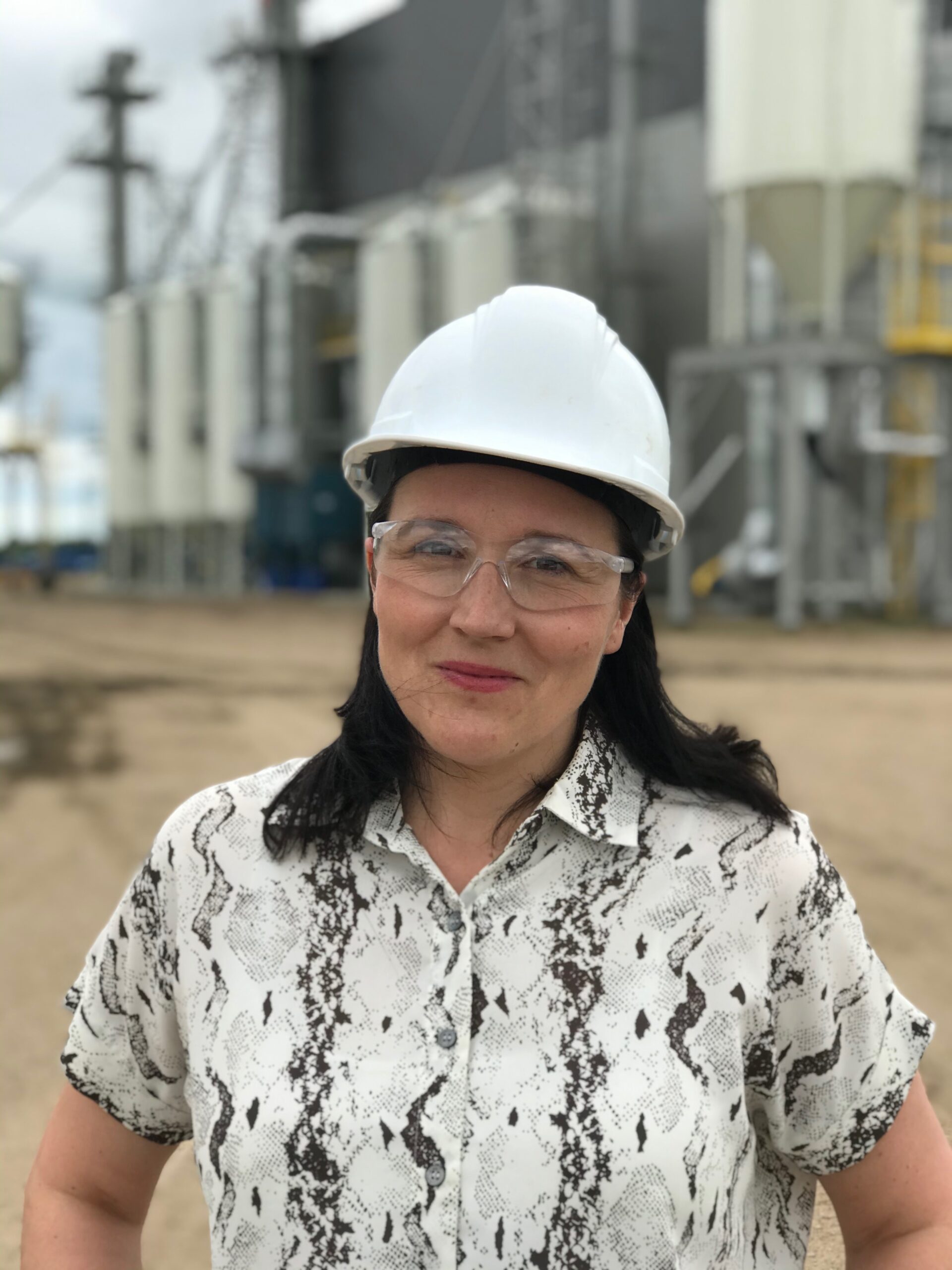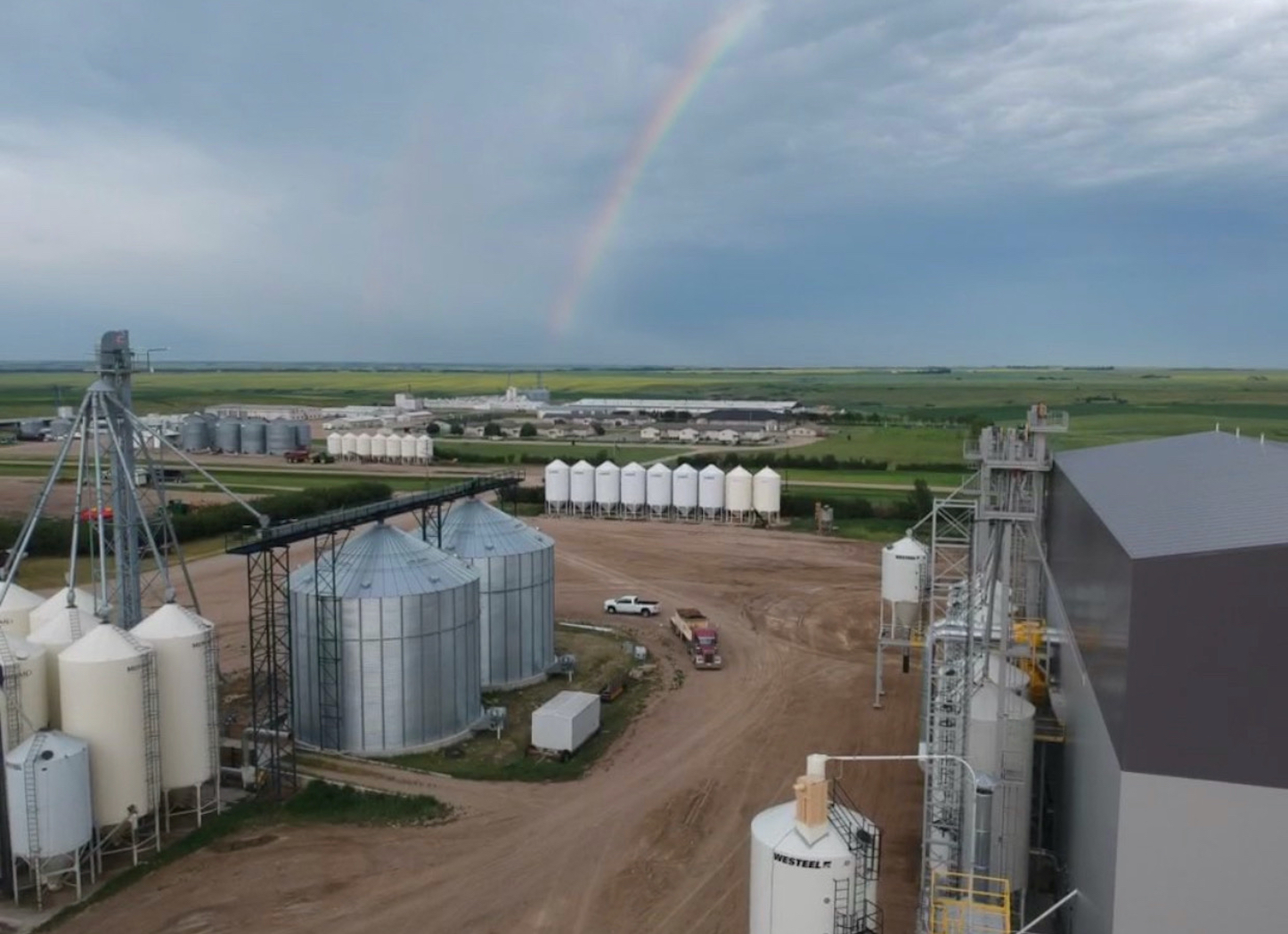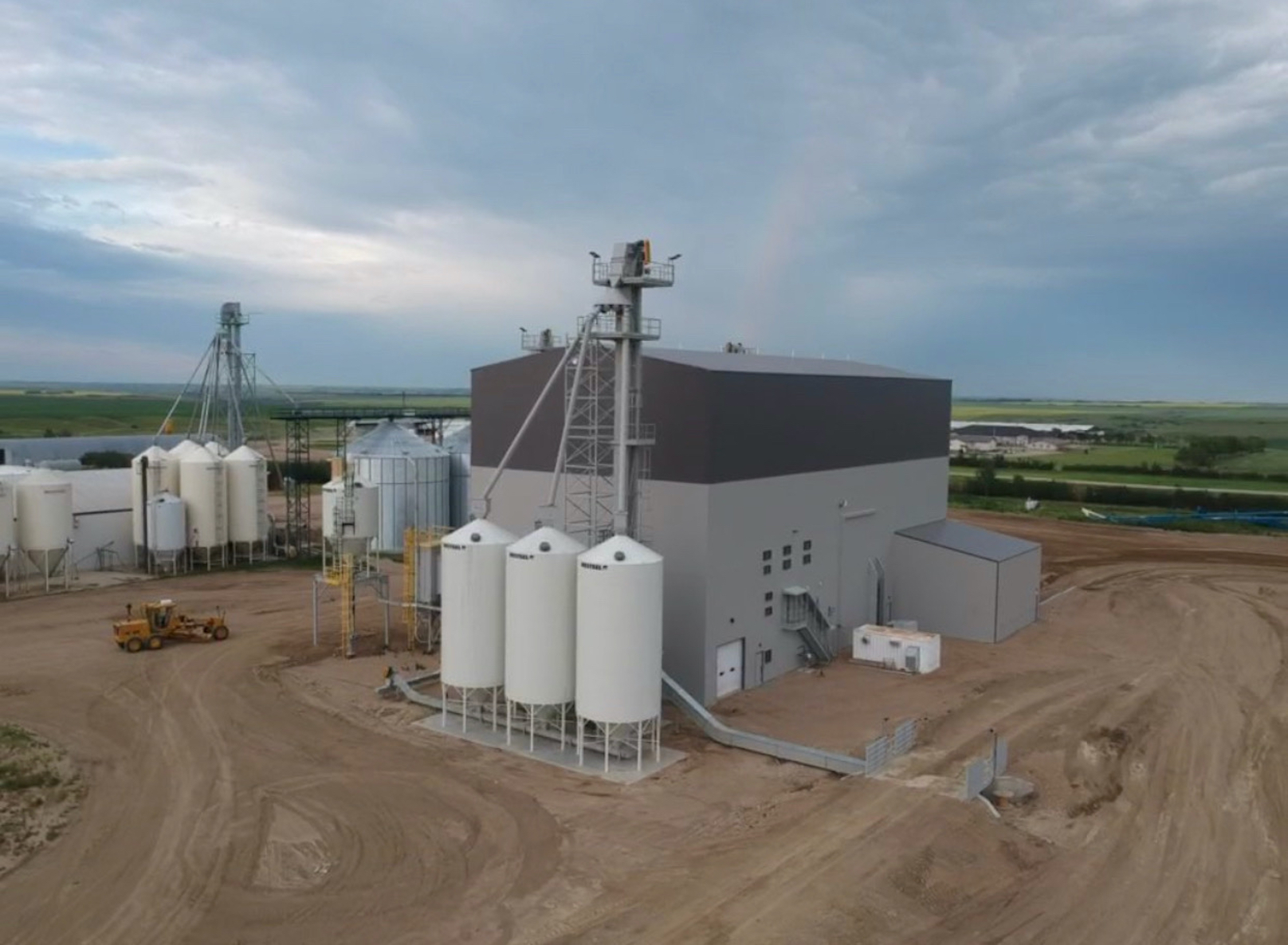By Harry Siemens



Protein Powered Farms is a protein extraction plant that extracts protein from peas, lentils, and fava beans, creating new proteins for food and feed.
“Working with farmers and end-users to create beneficial and sustainable long term relationships,” said the general manager Heidi Dutton, also a partner with the Sunny Dale Hutterite Colony, the plant’s location near Arelee, SK.
Dutton said the colony looked for ways to add value to their distinct crops and different feed operations, trading a whole value chain within the colony. When sitting down and working together, putting together an extraction plant came to light, with the plant becoming commercially active at the facility in August.
Three words in the name protein, powered, and farms tell the story. Dutton said the protein would go into both the feed and the food industry. There is a real push in the plant-based protein industry, the company’s main focus, but the feed industry also uses protein. There are two different markets. In terms of where it ends up physically, there are markets in the United States, Asia, and Latin America right now.
“We take pulse crops and concentrate the proteins taking out anything that’s not a protein to create a protein concentrate,” she said. “The product looks like flour for human and animal feed. Take a protein shake or a flour product that’s how it comes out of the system, a very pale-coloured flour.”
Protein Powered Farms started taking last year’s harvest with commercial shipments from farmers in August and exporting products.
Farmers deliver their pulses similar to an elevator with one big difference. PPF is keenly interested in the protein and moisture content of the peas.
“We test before we purchase the product, and offer a premium to farmers based quality, protein and moisture content, said Dutton. “We ship the product out in vans or intermodal units in tightly sealed bags.”
Like other protein processing plants, PPF doesn’t like any soybeans whatsoever, and one of the quality tests is for zero tolerance on soybeans. The plant has a cleaning system on the front end of the plant, so the general dockage that comes in with the peas is not such a big deal, but soybeans give them big headaches.
The PPF processing plant uses a dry separation process that doesn’t require water as other plants do. Therefore, the plant and processing yield no waste making it a very primal process for the environment.
Dutton said the Saskatchewan plant is looking to purchase from farmers about 40 000 tonnes of peas for processing. Due to the significant investments the company had the markets in place before putting the shovel in the ground.
The colony produces about 5000 tonnes of peas on their colony per year, all destined for the plant. The rest will come from farmers in the area. For the most part, every farmer will harvest a crop with slightly different protein content and receive a premium for protein based on the farmer’s sample.
Suppose the protein content is low, very little interest in buying that crop. But if the plant has a high protein level, very interested in purchasing it with an added premium off the regular market.
Some areas, for whatever reason, produce peas with a higher protein, other areas don’t.
In some cases, one field may yield 19 percent protein, and this other field right next to it will have 21 percent.
“We know that there’s something that’s happened both in the soil, the land, and environmental to drive that,” said Dutton. “But it’s not all environmental because two fields side by side should have the same protein if that were the case.”
She said some of the newer varieties are more genetically predisposed to give a higher protein. The Crop Development Centre (CDC) is a field crop research organization within the Department of Plant Sciences at the University of Saskatchewan. PPF works closely with them to get those varieties that produce higher protein content.
“I manage the plant and invested with the colony, so it is a partnership, and together want to create value to make it successful and grow the value of this industry locally,” said Dutton. “Making plant-based proteins from pulse crops, making us plant-powered, and we want to work with producers to help grow sustainable pulse crops.”

